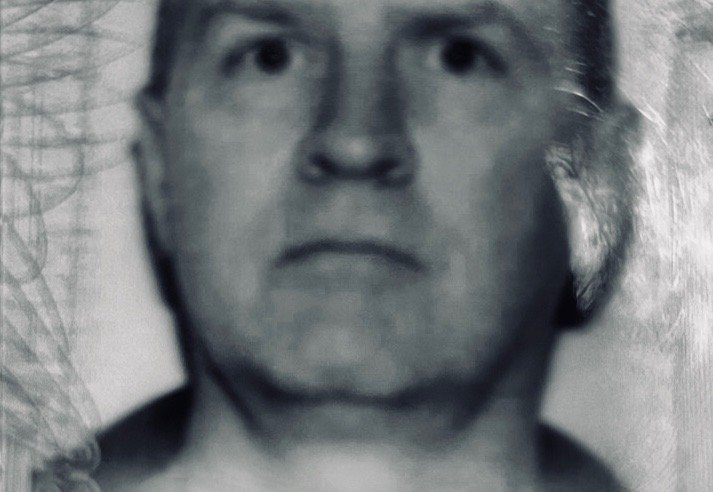My Resting Serial Killer Face
By Steve Watkins
By most indications, students liked me OK during my 30-year career as a college teacher. I always scored in the top percentile on numerical course evaluations. The anonymous, hand-written comments on small canary-colored cards that came with them were nearly all positive as well. I got more than my share of stars and chili peppers on Rate My Professors back when they did that sort of thing. At Florida State University, where I earned my Ph.D. in 1990, I was given an award for Best Career as a Graduate Student. And at Mary Washington College/The University of Mary Washington, where I taught in the English department for 22 years, I was named by the Princeton Review—an “educational services” publication that has nothing whatsoever to do with Princeton University—as one of the 300 best college professors in America, though god knows how they came up with their rating system.
I tell you this not to boast—there are plenty of folks around more than happy to catalog my myriad failings in academia—but as context. Because for all the accolades I got as a teacher during my years in the classroom, I only remember two of the hundreds if not thousands of student comments. One listed all the profanity I had used over the course of the semester, and I have to say I was disappointed by the lack of variety. The other, which could possibly be carved into my headstone some day, or at the very least added as graffiti, just said, “He’s creepy and he scares me.”
Some people have Resting Bitch Face. I’m worried I might have Resting Serial Killer Face, Exhibit A being the driver’s license photo that’s been following me around for the past ten years—stalking me, you might even say—and haunting anyone who sees it.
I’m in the airport line and the TSA agent asks for my ID. I hand it over and caution her that from the expression in my picture it might appear as though I just murdered somebody right before the photo was taken ha ha ha. She looks at me, looks at my license, looks at me again, returns it, and then tells security to give me the works: metal detector, backscatter x-ray, computer tomography scan, swab tests, hands-on full-body weapons search.
It’s possible this all has something to do with me having a pacemaker and ICD. It’s also possible it’s because I have Resting Serial Killer Face, and not just on my troublesome driver’s license photo where they told me I wasn’t allowed to smile so I frowned instead and my head tilted to the side as it always weirdly does whenever anybody takes my picture.
Sure, I can pass as your average white guy, as long as I’m vigilant. Five-ten-ish. Brown hair. Unremarkable build. Not handsome but not bad-looking either. Not particularly homicidal. But sometimes, in unguarded moments when I’m not conscious of the face I’m showing the world—Well, it’s like this:
It’s early February 1978 in Tallahassee, Florida. The unsolved Chi Omega murders happened just a few weeks before, in the middle of January, and the city and the university are still on extreme edge. I’ve just left the independent university newspaper offices in a small duplex we rent on the FSU campus to bring copy over to the student union where we also rent space for our production lab. It’s old-school journalism and I’m the associate editor. Plenty of people are around. It’s late afternoon and there’s a fair amount of traffic on Woodward Avenue, the street that runs through the middle of campus. I’m on the sidewalk walking quickly—have to drop off the copy for typesetting and paste-up, then hurry back to finish a story I’m working on for tomorrow’s paper. A young woman, also a student, is walking in front of me, not as fast as I am, so I soon catch up to her. Maybe she’s lost in her own thoughts, distracted, not paying attention. Who knows? But the second she hears my footsteps she whirls around, takes one look at me, and screams.
I stop dead in my tracks, stammering apology after apology, but she’s not having any of it. She scurries off, books tucked under her arm, sprinting across the lawn to the safety of the busy campus center. I feel like an asshole, like I’ve done something wrong. I should have announced I was there. Only that might have frightened her, too. I don’t know what I should have done. Just walked a lot slower, I guess. And not been wearing my Resting Serial Killer Face.
For the next few weeks I make sure I never venture out on campus alone, or accidentally surprise anybody. I’m not a natural smiler, but I smile anyway, though I worry that might make me look even creepier.
Finally, in the middle of February, they catch the Chi Omega murderer. It turns out to be Ted Bundy, another average white guy. Five-ten-ish. Brown hair. Unremarkable build. Not exactly handsome but not bad-looking either. Ordinary. Except for those eyes.
A few days later it comes out that he has been living in a boarding house called The Oaks on the same block as me on College Avenue. I’m two doors away in a rundown Victorian carved up into apartments. The lock doesn’t always work and I sometimes have to climb in through an unlocked window off the back porch. I know a couple of people who also live at The Oaks and they say they partied with Bundy a few times. He’d stolen somebody’s ID. Nobody knew who he was when he lived there, or what he’d done—or what he was about to do.
I grow a beard and mustache not long after.
The problem is, so does my brother Wayne and it doesn’t work out too well for him, either, leading me to wonder if this Resting Serial Killer Face might run in the family, god help us.
It’s a few years later and my friend Pam Shaw is in a laundromat in Tallahassee. So is Wayne, who she’s met a few times in the past. They say hi and then busy themselves with the washers and driers. Wayne’s hair is well past his shoulders. His beard isn’t ZZ Top, but it’s getting there. After awhile, another woman comes in who also knows Pam, but has never seen Wayne before.
Shortly after dumping her clothes into one of the machines, the woman sidles over to Pam and whispers, “Oh my god. Do you see that guy over there?”
She tilts her head to indicate Wayne, who’s on the other side of the laundromat.
Before Pam can answer, the woman says, “I think that’s Charlie Manson.”
Pam is taken aback. She looks long and hard at Wayne, just to be sure. “No way,” she says. “I know him. That’s not Charlie Manson. It’s Wayne Watkins.”
The woman refuses to believe her. “No,” she says. “I’m sure of it. That’s definitely Charles Manson.”
Pam tries to dissuade the woman but it’s no use. The woman grabs her wet clothes out of the washer, throws them in a basket, and leaves as quickly as she can, urging Pam to haul ass too but not waiting around to see if she does.
In fairness to Wayne—and to the freaked out woman in the laundromat—there was a rumor going around at the time that Charlie Manson had escaped from prison in California and was on his way to Florida. Lynette “Squeaky” Fromme, one of his disciples, was in a maximum-security women’s prison in Marianna, Florida, an hour from Tallahassee. She hadn’t been convicted of the Tate-LaBianca murders, but she had been convicted of attempting to assassinate Gerald Ford. Charlie supposedly wanted to break her out so they could get the Family back together and take care of some unfinished business.
It’s been a while since anybody screamed when they saw me, and even longer since Wayne washed his clothes in a laundromat. Bundy and Manson have been dead for years, and I read in the New York Times recently that while mass shootings are at an all-time high in America, serial killing is in serious decline, down from around 200 practitioners at any given time during the 1980s to just a dozen or so operating today.
Experts chalk it up to any number of factors: Deep vigilance. Helicopter parenting. Security cameras. Cell phone tracking. High-tech forensics. Data trails. DNA. Ring cameras. Social media.
But people see what they see. And popular culture is what it is. Take away all the serial killers people think are still out there and Hollywood wouldn’t be able to make too many movies.
Which is why I’ve been thinking about going to the DMV to get a replacement driver’s license, one with a REAL ID. I clearly need a new one, though I hear everything’s still backed up down there since the pandemic and it’s hard to schedule an appointment. I’ll just have to be patient. It’s not as if I haven’t been living with this mug for awhile. One thing I’m sure of: When they take the picture this time I’ll be smiling like crazy.
***
Steve Watkins is co-founder and editor of PIE & CHAI, a retired professor emeritus of English, a longtime tree steward with Tree Fredericksburg, an inveterate dog walker, a recovering yoga teacher and co-founder of two yoga businesses, father of four daughters, grandfather of four grandsons, and author of 15 books, three of which are scheduled for publication in the coming year.


